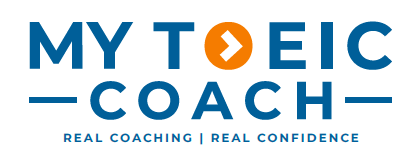🧠 Countable vs Uncountable Nouns in TOEIC Grammar
If you’ve ever paused mid-sentence wondering whether to say much information or many information, you’ve met one of TOEIC’s most common grammar traps.
Countable vs. uncountable nouns are a favourite in Part 5 because the wrong choice can be subtle — but costly.
🔍 Countable vs Uncountable Nouns
Countable nouns can be counted individually:
one email, two emails, three reports.
They have singular and plural forms.
Uncountable nouns refer to masses, concepts, or categories that can’t be counted directly:
information, advice, equipment, research.
They are always treated as singular — no plural “s.”
✅ Common TOEIC Examples
Countable: email, report, file, contract, suggestion, meeting.
Uncountable: information, advice, equipment, furniture, luggage, traffic, progress, research.
⚠️ Common Mistakes
Using many with an uncountable noun → ❌ many informations → ✅ much information.
Adding “s” to uncountable nouns → ❌ equipments, advices.
Choosing the wrong quantifier in multiple-choice traps.
📝 Sample TOEIC Question
The department received a large amount of useful ___ about the new software update.
A) informations
B) information ✅
C) informations are
D) informing
Why B? Information is uncountable. The phrase a large amount of is used with uncountable nouns.
🔧 How to Spot the Difference
If the noun is a physical item you can count → likely countable.
If it’s a general concept or mass → likely uncountable.
If “one [noun]” sounds unnatural → likely uncountable.
❌ TOEIC’s Favourite Confusing Pairs
much information ✅ — many informations ❌
some advice ✅ — several advice ❌
a piece of equipment ✅ — a few equipment ❌
some research ✅ — two researches ❌
heavy traffic ✅ — many traffics ❌
📏 Quantifier Rules
Countable: many, few, several → many suggestions, a few ideas.
Uncountable: much, little, a large amount of → much information, a little time.
🧠 Why TOEIC Uses This Trap
The test rarely asks “Is this countable or uncountable?” directly.
Instead, it hides the test inside:
Sentence completion with tricky quantifiers.
Incorrect plural forms as distractors.
Subject–verb agreement traps linked to countability.
🗣 Real-World Examples
“Please send the information by Monday.”
“We received some excellent feedback.”
“There is too much traffic on the way to the airport.”
“Let’s go over the advice the client gave us.”
These are common in emails, meetings, and presentations — exactly the English TOEIC expects you to process quickly.
Final Word
Countable vs uncountable is an easy win in Part 5 if you’ve trained your eye for it. Memorise the most common uncountable nouns TOEIC uses, match them with the correct quantifiers, and stop adding “s” where it doesn’t belong.
For more strategies and resources to master TOEIC grammar under pressure, visit the English Library Collection and start locking in countable/uncountable accuracy today.

